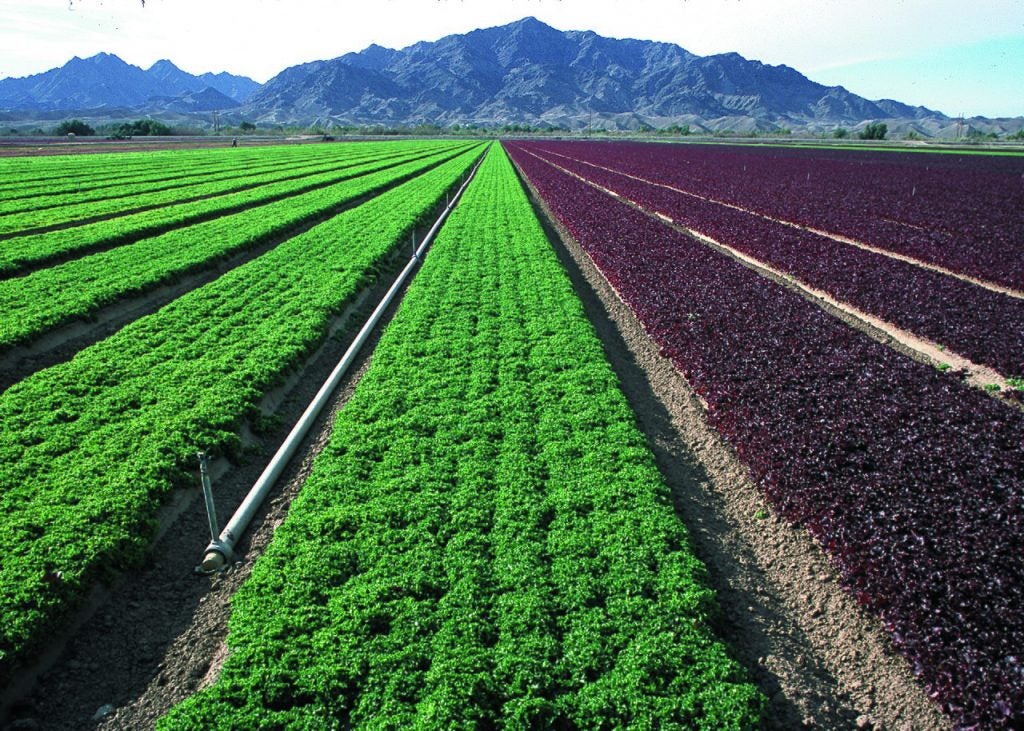Three ways the farm bill will help western states adapt to drought
The bipartisan farm bill that President Trump signed into law today contains far-reaching provisions to conserve water and build drought resilience in the American West.
Sens. Dianne Feinstein (D-Calif.), Cory Gardner (R-Colo.) and other western lawmakers recognized the importance of providing more funding to support the region’s crucial and increasingly stressed water systems.
Western legislators secured planning and cost-share funding for groundwater recharge work in California, a critical improvement in the law as producers begin the challenging task of bringing groundwater basins back into balance under California’s Sustainable Groundwater Management Act.
The new provisions in the farm bill also could help farmers and water agencies develop and fund projects that improve drought resilience and planning in the Colorado River basin, where the river supplies water for 40 million people and 6 million acres of farmland each year.
Here are three key provisions that stand out for helping to enable farmers and water managers in the western U.S. adapt to a world with less water:
New bipartisan farm bill contains far-reaching provisions to conserve water and build drought resilience in the American West Share on X1. Greater access to funding for water conservation practices
The farm bill expands access to the Environmental Quality Improvement Program (EQIP) for projects that conserve water to advance drought mitigation and reverse declining aquifers. The bill also increases overall EQIP funding to $2 billion by the end of the bill’s 5-year term, up from $1.75 billion under current law.
Under current law, only farmers can access funds from EQIP. But in the West, irrigation systems are often owned collectively or by a third party, which makes them ineligible for EQIP funding for water conservation. The farm bill will now allow irrigation districts, associations or acequias (community-operated water districts in New Mexico and Colorado) hold EQIP contracts. This makes funding more accessible for water conserving practices via irrigation systems, management technology and transitions to crop rotations.
2. More support for public-private partnerships
Established in the 2014 farm bill, the Regional Conservation Partnership Program (RCPP) expands the reach of USDA programs by bringing local and regional governments, universities, nonprofit organizations and the private sector to the table. By leveraging public-private partnerships, RCPP is a powerful engine for delivering and scaling conservation results faster than the federal government could achieve alone.

The law directs the USDA secretary to simplify the RCPP application process and allows project partners to bundle applications, which then receive priority in the approval process. Both efforts aim to boost program participation.
The new law also encourages innovative public-private partnerships and performance-based payments to producers and environmental markets – approaches that are gaining momentum in California. The farm bill specifically authorizes up to 15 grants or alternative funding arrangements per year to support such projects, with no limit on the dollar amount of each grant.
3. Fewer barriers to watershed-wide projects
For the first time, the 2018 farm bill provides assured funding to the Watershed Act and removes barriers to enable more projects that foster drought resilience and conservation at a watershed scale.
In particular, the bill allows the USDA secretary to waive watershed planning requirements if a plan would be duplicative or unnecessary. The bill also authorizes the use of this flexible tool in RCPP, which will help facilitate more RCPP work at the watershed scale.
How the farm bill delivers watershed-level improvements
Increasingly dry conditions and water scarcity are putting unprecedented pressure on agriculture in the western U.S., with potential implications for the nation’s food supply. The 2018 farm bill takes an important step in helping to ensure that farmers and water agencies in the American West are better positioned to address these long-term challenges.











